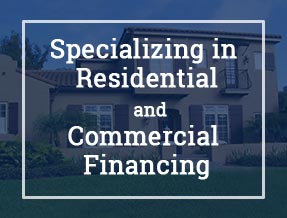KEY POINTS
- Second homes, formally called accessory dwelling units (ADUs), are cropping up in back and side yards across America, acting as either rental units or additional space for aging parents and still-nested adult children.
- Growth in the sector has been fueled by changes to local and state zoning rules. Some municipalities are struggling with a lack of affordable housing and see these additional units as one remedy.
- “Our focus is basically to expand the market and really drive the number of ADU installations across the Bay Area and California up dramatically, “said Steve Vallejos, CEO of Prefab ADU.
They’re not just she-sheds or he-sheds or granny pods or tiny homes. The latest housing trend in the backyard is now front and center for a new breed of homebuilder and landlord.
Second homes, formally called accessory dwelling units (ADUs), are cropping up in back and side yards across America, acting as either rental units or additional space for aging parents and still-nested adult children.
Growth in the sector has been fueled by changes to local and state zoning rules. Some municipalities are struggling with a lack of affordable housing and see these additional units as one remedy.
In 2010 Portland, Oregon, waived impact fees for ADUs, making them significantly less expensive. As a result, the number of ADU permits jumped from 86 in 2010 to 660 in 2018, according to a count by accessorydwellings.org.
In California, when a 2017 state law forced cities to relax ADU regulations, permits jumped even more dramatically.
And that all translates into big growth for ADU builders, like Prefab ADU, based in the California Bay Area. It built and installed about 100 ADUs this year but expects to expand that to at least 1,500 next year.
“Our focus is basically to expand the market and really drive the number of ADU installations across the Bay Area and California up dramatically, “said Steve Vallejos, CEO of Prefab ADU, who admits that the market is really just starting to find its way, especially when it comes to financing.
“ADU is still really for the most part an affluent homeowner product, meaning you have to have cash on hand to take this on,” he added, noting that financing is a concern for the larger homeowner universe.
Vallejos said inquiries from potential clients are evenly split between those looking to address housing for family members and those seeking rental income. Pricing at Prefab depends on the size of the unit, of course, but the most popular model, a 288-square-foot home, will run about $105,000 installed.
Rental income was the impetus for Lisa and Chris Puchalla. They built a charming ADU in the side yard of their Washington, D.C., home and are now renting it on a monthly basis.
Retirement plan
“We’re looking for a professional, someone that’s coming to and from D.C., perhaps, to rent short term,” said Chris. “And you know, that also helps, because if they’re a person that’s commuting to D.C. for work, they’re not here all the time, so that’s kind of a side benefit.”
The Puchallas also have their eye on an even bigger financial return in retirement.
“We lived in it for 10 months while we renovated our main house, and we loved it,” said Lisa, an interior designer with Lily Mae Design. “I definitely can see us hanging out there, retiring and traveling, and then renting the main house.”
Washington, D.C., also recently relaxed building codes on ADUs allowing the Puchallas to build a second floor on the one-bedroom, one-bathroom home.
But as with all real estate, zoning regulations are local, and that is one of the greatest roadblocks for companies like Prefab ADU.
“It’s addressing financing, it’s addressing standardizing products within cities, and then also it’s creating partner relationships with contractors, architects, and even other builders,” said Vallejos. “There are many different scenarios that people look into based on income, lot size, different zoning rules, so we build ADUs that start at about 150 square feet going up to 1,200 square feet.”
While it is definitely becoming easier to build ADUs in some local areas, there are still battles big and small, from zoning to neighborhood opposition. Some don’t want to see their neighborhoods crowded with renters, pushing density and services beyond capacity.
The Puchallas were very sensitive to their neighbors’ feeling and took extra steps to keep community peace.
“Before we built it, we talked to all of our surrounding neighbors and sent them the plans — this is what we’re thinking of doing, and we’re going to be using it for family and friends, may rent it short term,” said Lisa. “Everybody was on the same page and really nice throughout the entire process. We were really lucky.”
Some of the neighbors came by to check it out later, she added, interested in perhaps doing the same on their properties.
Source – CNBC


